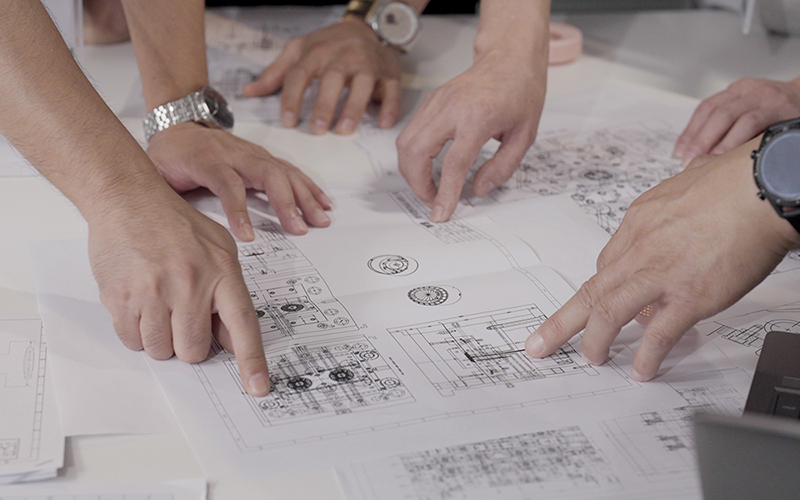Injection Mold Machining plays a crucial role in modern manufacturing industry and is widely applied in various fields such as automobiles, electronics, and medical treatment. However, during the machining process, various problems are often encountered, which can affect the quality of molds, production efficiency, and lead to product defects and increased costs. Therefore, it is of great significance to have an in-depth understanding of the common problems and their corresponding solutions to improve the level of mold manufacturing and product quality.
Causes: The designer has a misunderstanding of the product dimensions, improper settings or usage of software precision, and insufficient understanding of the mold structure and machining process.
Influencing Factors: Characteristics of the product material, complexity of the mold structure, and experience and skills of the designers.
Preventive Measures: Accurately calculate and compensate for the shrinkage rate, select and master appropriate software proficiently, and strengthen the communication and collaboration between designers and machining process technicians.
Solutions: If the dimensional deviation is small, adjust the machining parameters for correction; if it is large, carry out rework or remachining.
Causes: Insufficient analysis of the product forming and demolding requirements, lack of innovation, and adherence to traditional design.
Influencing Factors: Shape and structure of the product, forming process, manufacturing cost and cycle.
Preventive Measures: Analyze the product to optimize the design, draw on advanced concepts and cases, and conduct design reviews.
Solutions: For demolding difficulties, increase the draft angle or use a mold release agent; for problems with runners and gates, redesign them; in severe cases, redesign and remanufacture the mold.

Causes: Tool wear, improper cutting parameters, insufficient precision and stability of the machine tool, unreasonable process routes, and uneven workpiece materials.
Influencing Factors: Quality of the tool material, optimization level of cutting parameters, performance and maintenance of the machine tool, and characteristics of the workpiece materials.
Preventive Measures: Replace tools regularly, select and optimize parameters reasonably, maintain the machine tool, and formulate reasonable process routes.
Solutions: For tool wear, use compensation for correction; if the error is large, remachine or repair the workpiece; for roughness problems, adjust the parameters or carry out subsequent machining.
Causes: Unreasonable discharge parameters, improper design and manufacturing of electrodes, and poor circulation and filtration of the working fluid.
Influencing Factors: Discharge parameters, quality and precision of electrodes, performance and circulation system of the working fluid.
Preventive Measures: Set reasonable discharge parameters, manufacture electrodes with high precision, and check and replace the working fluid regularly.
Solutions: For surface burns, grind and polish; if the discharge marks are deep, carry out rework on the mold or remanufacture the electrodes for another EDM operation; for unstable discharge, check and adjust the parameters and the working fluid system.

Causes: Insufficient understanding of the product usage and working environment, and failure to conduct acceptance inspection according to standards during procurement.
Influencing Factors: Usage conditions of the product, requirements for mold life, and reputation and quality control of suppliers.
Preventive Measures: Select materials considering the usage environment, establish a procurement standard acceptance system, and cooperate with reliable suppliers.
Solutions: If the material has not been used, replace it; if it has been used, improve its performance through surface treatment.
Causes: Unstable production processes of suppliers, influence on materials during transportation and storage, and imperfect inspection means of enterprises.
Influencing Factors: Management level of suppliers, transportation and storage conditions, and inspection ability of enterprises.
Preventive Measures: Evaluate and manage suppliers, optimize transportation and storage conditions, and perfect the inspection equipment and process.
Solutions: Communicate with suppliers to improve, return or exchange unqualified materials, and strengthen quality monitoring during production.

Causes: The machining accuracy of components does not meet the requirements, the assembly process is unreasonable, and the components have not been cleaned and trimmed.
Influencing Factors: Machining accuracy of components, rationality of the assembly process, and skills and operation specifications of assembly personnel.
Preventive Measures: Improve the machining accuracy of components, formulate a reasonable assembly process and train personnel, and clean and check the components before assembly.
Solutions: For poor fit of components, trim and grind the components; in severe cases, remachine the components or adjust the assembly process; during debugging, adjust the assembly accuracy according to the forming situation.
Causes: Insufficient understanding of injection molding process parameters, failure to consider the influence of various factors, and subjective judgment in debugging.
Influencing Factors: Structure and size of the mold, material and shape of the product, performance parameters of the injection molding machine, and experience and skills of the debugging personnel.
Preventive Measures: The debugging personnel should be familiar with the parameter setting methods and techniques, analyze and determine the preliminary parameters before debugging, and optimize the parameters through scientific experiments.
Solutions: Adjust the injection molding process parameters according to the type of product defects, and continuously optimize by observing the forming situation.
In conclusion, Injection Mold Machining is of great significance in modern manufacturing industry. However, problems may occur in each link involved. An in-depth analysis of the common problems and corresponding solutions in aspects such as mold design, machining processes, material selection, and assembly and debugging will help us effectively deal with them in actual operations, thereby improving the quality of molds and production efficiency, ensuring product quality, and promoting the development of the injection mold machining industry.
Copyright © 2023 :Worldbound Plasitc Products Co.Ltd